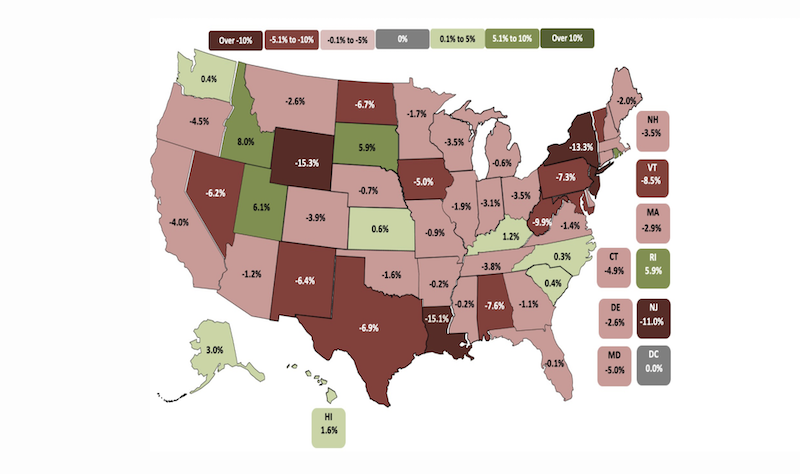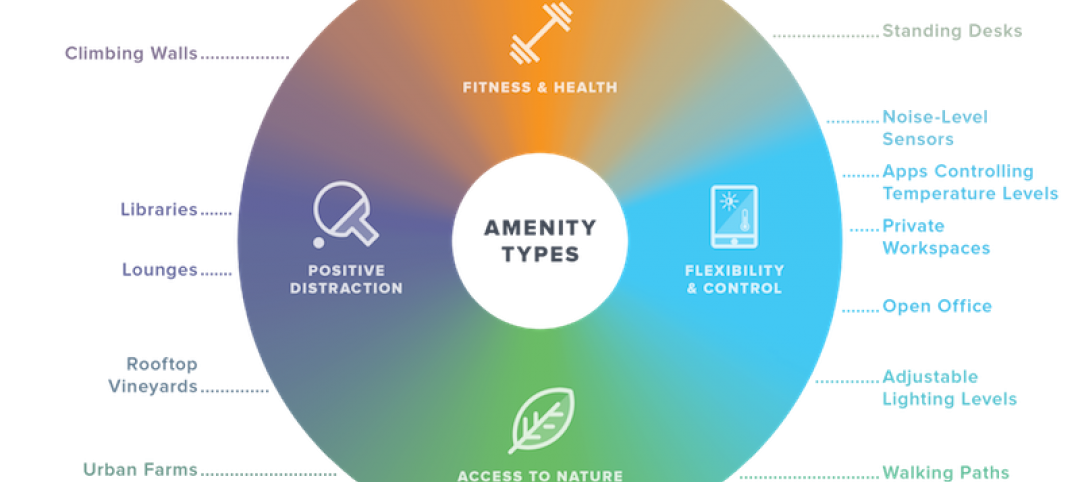Construction employment in June remained below the levels reached before the pre-pandemic peak in February 2020 in 39 states, according to an analysis by the Associated General Contractors of America of government employment data released today. Association officials noted that many construction firms are struggling to cope with supply chain challenges and rising materials prices, which is undermining demand for new projects and impacting firms’ ability to hire new workers.
“The construction industry is a long way from full recovery in most states, in spite of a hot homebuilding market in many areas,” said Ken Simonson, the association’s chief economist. “Soaring materials costs, long production times for key items, and delayed deliveries are causing owners to postpone projects.”
From February 2020—the month before the pandemic caused project shutdowns and cancellations—to last month, construction employment increased in only 11 states and was flat in the District of Columbia. New York shed the most construction jobs over the period (-54,300 jobs or -13.3%), followed by Texas (-54,100 jobs, -6.9%) and California (-36,500 jobs, -4.0%). Wyoming recorded the largest percentage loss (-15.3%, -3,500 jobs), followed by Louisiana (-15.1%, -20,700 jobs) and New York.
Of the states that added construction jobs since February 2020, Utah added the most (7,000 jobs, 6.1%), followed by Idaho (4,400 jobs, 8.0%), South Dakota (1,400 jobs, 5.9%) and Rhode Island (1,200 jobs, 5.9%). The largest percentage gain was in Idaho, followed by Utah, Rhode Island, and South Dakota.
From May to June construction employment decreased in 25 states, increased in 24 states and D.C., and held steady in Maine. The largest decline over the month occurred in New York, which lost 6,900 construction jobs or 1.9%, followed by Pennsylvania (-4,100 jobs, -1.6%) and Texas (-3,300 jobs, -1.3%). The steepest percentage declines since May occurred in Vermont (-3.5%, -500 jobs), followed by New York, Alabama (-1.9%, -1,700 jobs), and North Dakota (-1.9%, -500 jobs).
Georgia added the most construction jobs between May and June (5,700 jobs, 2.9%), followed by Kentucky (2,700 jobs, 3.4%) and Florida (2,500 jobs, 0.4%). Kentucky had the largest percentage gain for the month, followed by Alaska (3.0%, 500 jobs) and Georgia.
Association officials cautioned that construction employment is unlikely to grow in many parts of the country until many of the supply chain challenges impacting firms improve. They added that the President could help by removing tariffs on key construction materials. They added that ending the unemployment supplements would add to the pool of workers for manufacturers, shippers, and construction firms to hire.
“Easing tariffs will help, but what the construction supply chain needs are workers to manufacture the products, ship them to contractors and build the projects the economy demands,” said Stephen E. Sandherr, the association’s chief executive officer. “Unemployment supplements helped families survive the pandemic-related lock downs, but they are undermining the post-pandemic recovery.”
View state February 2020-June 2021 data, 16-month rankings, 1-month rankings, and map.
Related Stories
Market Data | Aug 20, 2017
Some suburban office markets are holding their own against corporate exodus to cities
An analysis of mortgage-backed loans suggests that demand remains relatively steady.
Market Data | Aug 17, 2017
Marcum Commercial Construction Index reports second quarter spending increase in commercial and office construction
Spending in all 12 of the remaining nonresidential construction subsectors retreated on both an annualized and monthly basis.
Industry Research | Aug 11, 2017
NCARB releases latest data on architectural education, licensure, and diversity
On average, becoming an architect takes 12.5 years—from the time a student enrolls in school to the moment they receive a license.
Market Data | Aug 4, 2017
U.S. grand total construction starts growth projection revised slightly downward
ConstructConnect’s quarterly report shows courthouses and sports stadiums to end 2017 with a flourish.
Market Data | Aug 2, 2017
Nonresidential Construction Spending falls in June, driven by public sector
June’s weak construction spending report can be largely attributed to the public sector.
Market Data | Jul 31, 2017
U.S. economic growth accelerates in second quarter; Nonresidential fixed investment maintains momentum
Nonresidential fixed investment, a category of GDP embodying nonresidential construction activity, expanded at a 5.2% seasonally adjusted annual rate.
Multifamily Housing | Jul 27, 2017
Apartment market index: Business conditions soften, but still solid
Despite some softness at the high end of the apartment market, demand for apartments will continue to be substantial for years to come, according to the National Multifamily Housing Council.
Market Data | Jul 25, 2017
What's your employer value proposition?
Hiring and retaining talent is one of the top challenges faced by most professional services firms.
Market Data | Jul 25, 2017
Moderating economic growth triggers construction forecast downgrade for 2017 and 2018
Prospects for the construction industry have weakened with developments over the first half of the year.
Industry Research | Jul 6, 2017
The four types of strategic real estate amenities
From swimming pools to pirate ships, amenities (even crazy ones) aren’t just perks, but assets to enhance performance.
















